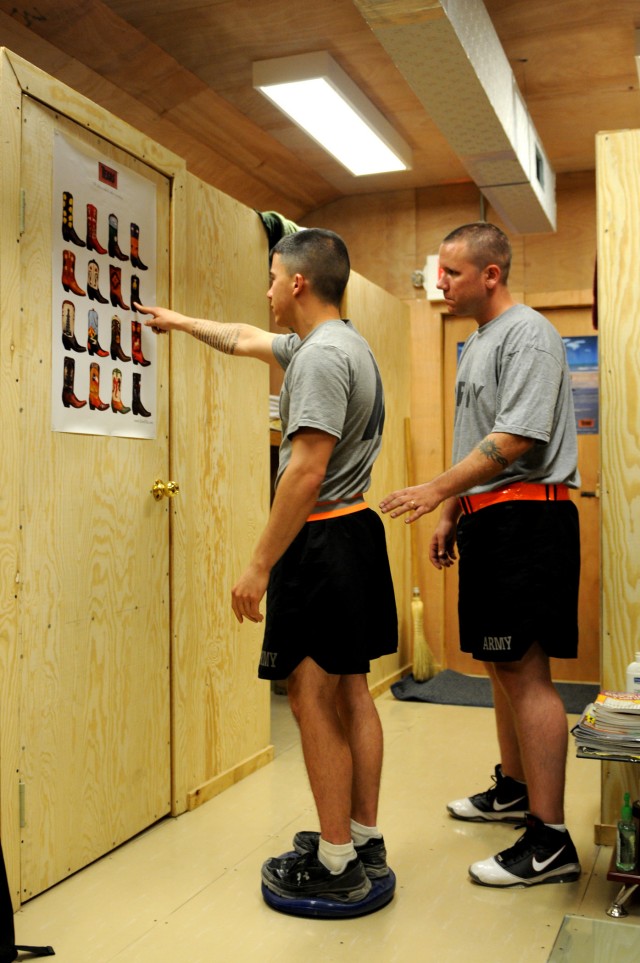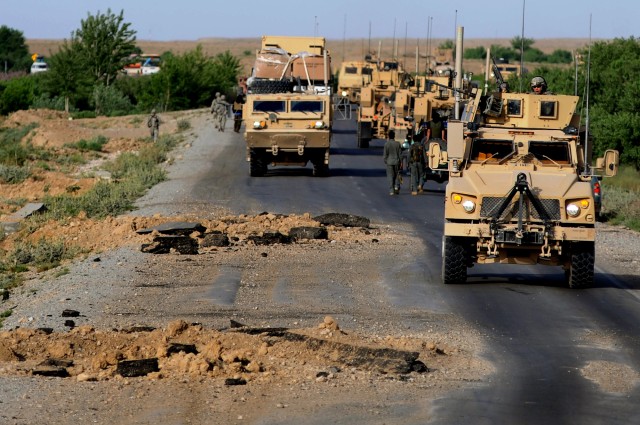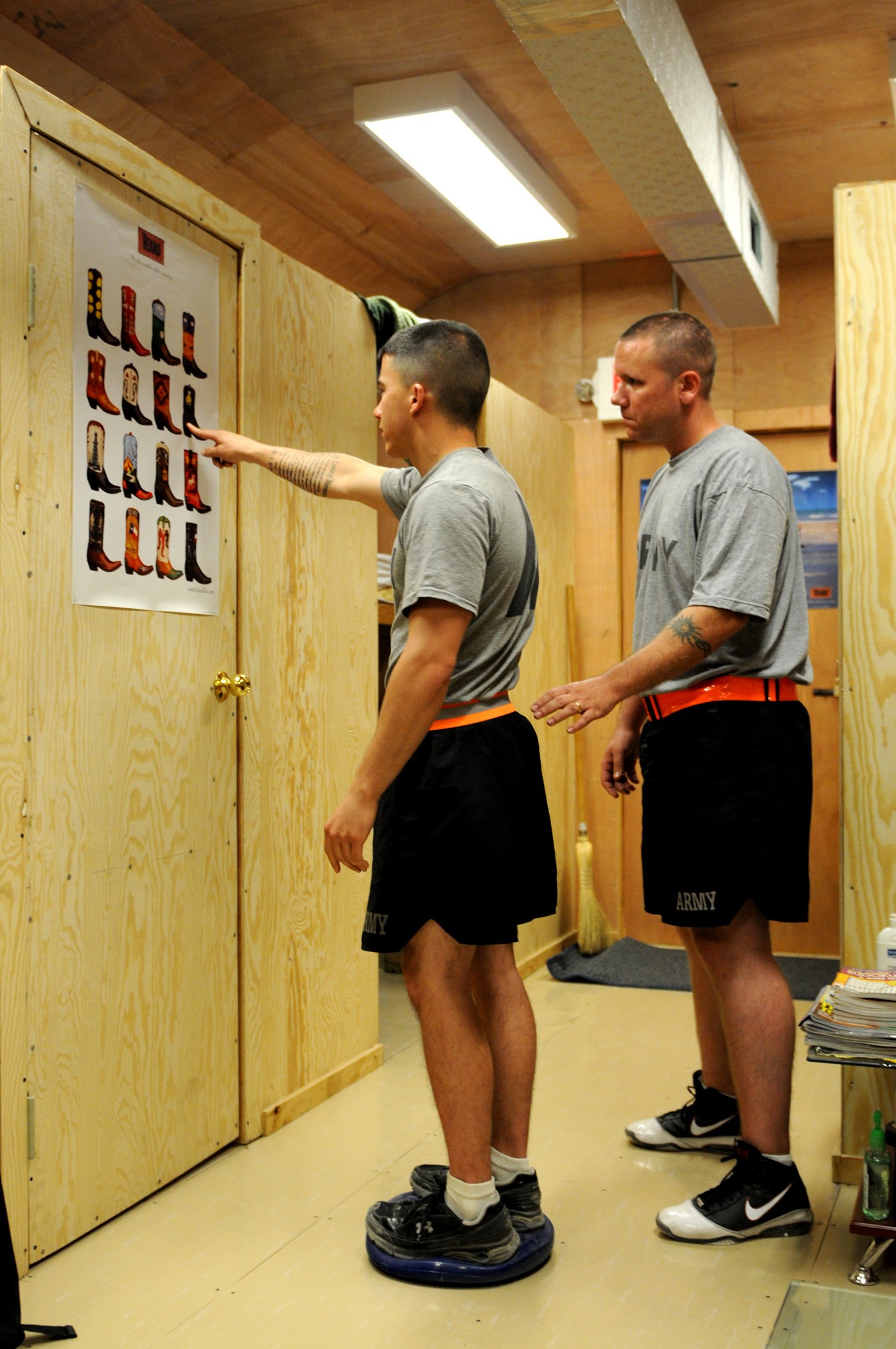What do a Soldier, a pro football player and hometown girls' soccer team have in common' A propensity for traumatic brain injuries.
The term sounds scary, but it refers to one of the most common injury types. "Most mild traumatic brain injuries-these are concussions-certainly, most of them resolve on their own, readily," said Brig. Gen. Richard Thomas, the assistant surgeon general for Force Protection. "Most of us in our life have had head injuries or mild concussions, that type of thing, and most do resolve."
Concussive injuries aren't unusual among Soldiers, Thomas explained, and are typically the results of blows to the head, or in combat, getting knocked around by a blast or vehicle rollover. Because of the commonality of the injury and the "shake it off" culture, concussions and more severe brain injuries present a persistent problem within the force.
Officials at the U.S. Army Medical Command recognized the need to identify and diagnose concussive injuries sooner. The military services worked with the Defense Center of Excellence for Psychological Health and TBI to develop new assessment and treatment protocols for concussive injuries, Thomas said.
Previous assessments were not as standardized or spread as evenly over the force as they are today, Thomas explained, but with the implementation of the new protocols, that gap closed.
"What's been happening for a long period of time is that we've been admiring the problem. We haven't really affected behaviors to get these (Soldiers) the treatment they need," Thomas said.
Once the protocols were developed, MEDCOM put them into action via the Warrior Mild Traumatic Brain Injury Campaign Plan.
"We developed the protocols using scientific evidence (and) we operationalized them so that they made sense and were something that we could actually use in the hands of Soldiers," Thomas said. "And then we developed the campaign plan to reinforce that."
This is an example of senior Army leaders directly affecting positive change, according to Thomas, who added that Gen. Peter W. Chiarelli, vice chief of staff of the Army and Lt. Gen. Eric B. Schoomaker, Army surgeon general, are passionate about preventing concussive injuries and diagnosing and treating them as soon as possible.
Soldiers are required to undergo medical evaluations if they are involved in certain trigger events, like being within 50 meters of a blast or receiving a direct blow to the head. Downtime is also mandatory if those trigger events are present.
Medics can make initial assessments, checking a Soldier's recall and cognition. If they identify symptoms of or have concerns about a possible concussion, they will send the Soldier to a licensed provider, who will perform appropriate neurological exams. If it appears there is a more serious injury, the providers can perform imaging scans.
"We've taken the option out of this," Thomas said. In the past, Soldiers often just shook off mild head injuries, but MEDCOM discovered that many actually had concussions but weren't getting checked out. That meant Soldiers weren't performing at optimal levels, Thomas said, and ran the risk of being concussed again before they were fully healed, which can lead to long-term problems.
Though people generally recover from mTBI without lingering issues, those with more severe concussions or multiple concussions before the first heals can experience depression, aggression, early-onset dementia and other health issues, Thomas added.
"Our strategy is (to) educate, train, treat and track," Thomas said. "We put the education up front because that's how you're going to change the culture. It's not a matter of shaking it off and getting back into the fight. It's not a matter of rubbing some dirt on and going on, or staring at the sun makes your eyeballs tough. That doesn't work."
The National Football League has even approached MEDCOM to learn about the new protocols so they can better treat their players. They adopted some of the military's treatments, Thomas said, and that helps Army medical professionals fight the Soldier-mindset battle.
"(If) Soldiers see that the NFL is doing it, it helps us with our cultural attack," because if it is good enough for NFL players, it's probably good enough for Soldiers, Thomas added.
"The truth is, we need to have these guys treat these wounds like any other wound: Get it checked and get it treated early. Early recognition of signs and symptoms and early treatment, that's the key," he said.
In the fall of 2009, MEDCOM started training Soldiers headed to Iraq and Afghanistan on the new TBI protocols and had them establish treatment facilities in theater, he explained. During the summer of 2010, leaders signed a joint document stating that all the services must adhere to the treatment protocols the Army had established.
MEDCOM received push back from field commanders at first because they were worried about Soldiers being out of the fight for 24 hours or more. In actuality, because the treatment facilities for Soldiers are so close, they are checked, evaluated and returned to duty faster, Thomas explained.
The number of Soldiers medevaced is also lower because of the early assessments-Soldiers who have more severe concussions are found and removed from the fight, while Soldiers with mild injuries are kept close to their units and allowed time to recover, reducing the risk for multiple concussive injuries.
"The secret to success with these protocols is that it's not just been a medical idea, but we've given it over to the Soldiers. It's a commanders' program," Thomas said.
The Army is leading the way for concussive injury treatment with the WMTBICP. "It's kind of like CPR for the brain. It's the first time we've ever had that, anywhere," Thomas said.
"We want to mitigate the risk to Soldiers," Thomas said. "It's the right thing to do."






Social Sharing